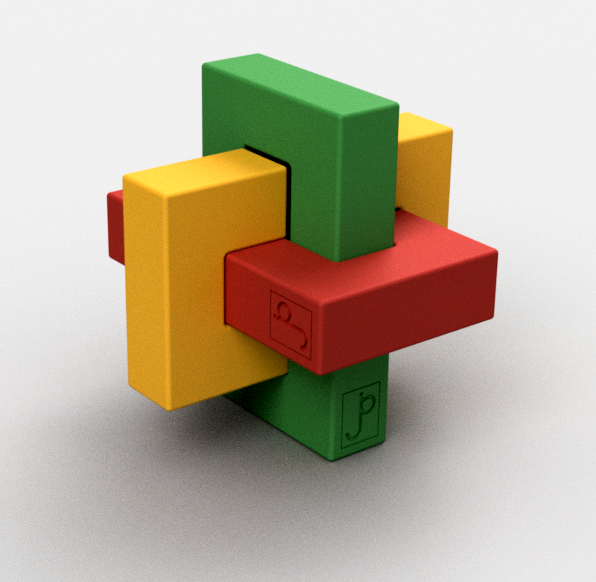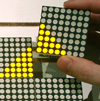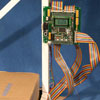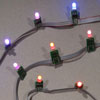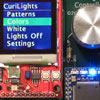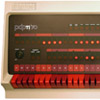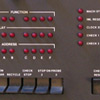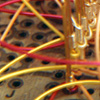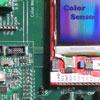Back in the mid/late 1980s I wrote a couple of cool (to me at least) Macintosh Applications.
Macintosh Pico

This is an image processing language demo based Gerard Holzmann’s book Beyond Photography – The Digital Darkroom. The app lets you interactively type expressions in Holzmann’s language and see the results in another window.
Wallpaper for the Mind
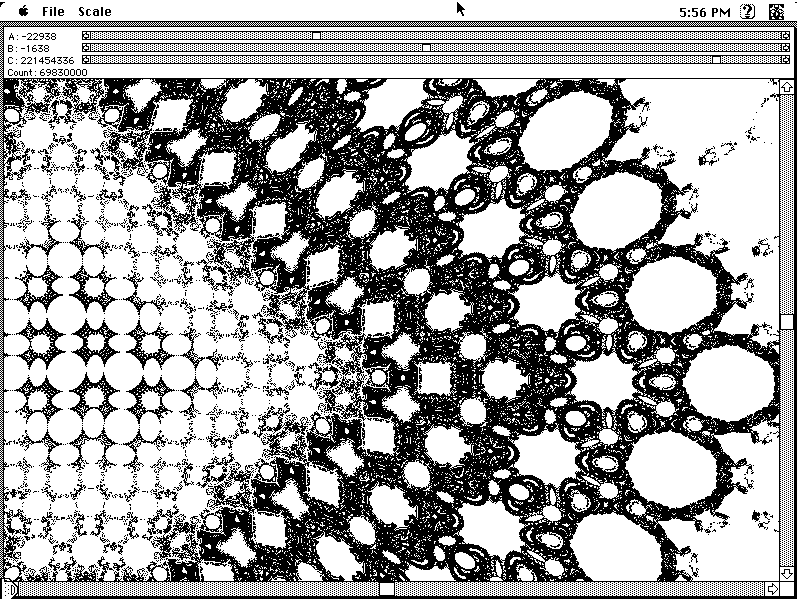
This app creates chaotic patterns based on a formula published in Scientific American‘s Computer Recreations column. You can vary the formula’s parameters and instantly see the effects on the pattern, as well as zoom and pan around the results.
These were both implemented as fun demos. Neither app had much in the way of commercial potential, so I gave them away for free. Both were originally written to run on 68K Macintoshes running System 7, typical of the late-80s. Read on to learn about their new lease on life.
Within ten years of creating them, the apps were essentially dead. Apple switched to a different CPU (the PowerPC) and eventually stopped supporting the emulator allowing older apps built for the 68K processor to run. This was a death blow to Macintosh Pico, since it compiled the expressions in the app directly to 68K code. I apparently did update Wallpaper to be a “fat binary” able to run on both the 68K and PowerPC, but Apple eventually stopped supporting the graphics it depended on.
By the early 2000s, when I moved my web site to a new host, I glumly took down the web page distributing the apps (I’ve resurrected a copy here). The Apple hardware and operating systems the apps ran on were no longer commonly available.
Emulation to the rescue
But! We live in the future, and our new computers are so fast they emulate old ones with ease. Even more amazing, the Internet Archive’s Emularity is able to run vintage software right in your browser, so you can experience the software with one click. Nothing to install or set up. Visit Macintosh Pico or Wallpaper for the Mind at The Archive and click on the splash screen. An early-90’s era Mac boots up in your browser, and you double-click the applications to run them. Just like you did in 1992.
The emulations, running in the browser, are approximately as fast as the original hardware was 30 years ago. This is amazing given the multiple layers of abstraction conspiring to make it happen.
If you really want to get into it, try installing an emulator onto your computer locally (details here). If you run the emulator directly on your modern PC, the old code runs orders of magnitude faster than it did on the vintage hardware. Back in the day, booting up a Mac took the better part of a minute. Now when emulated directly on current PCs it takes less than a second for the emulated Mac to boot. As someone who spent many hours in front of 68K Macs decades ago, the effect is almost comic, like watching a familiar movie suddenly flying by on fast forward. It’s fun to see these apps running far faster than they ever did when I wrote them.
[Actually, I did briefly witness the hyper-fast Mac almost 30 years ago when I worked at Apple. A friend showed me a lab prototype of a Mac based on Motorola’s 68060 CPU, stuffed into the case of an old Mac IIfx. Such a machine was never released by Apple (they pivoted to using the PowerPC instead). But that 68060 prototype, running an older copy of System 7, did boot up in about a second. ]













